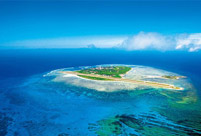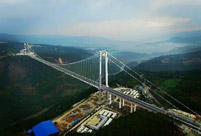

What's South China Sea issue?
The South China Sea issue is basically territorial disputes between China and some of its neighbors about some of the land features of Nansha Islands, which is one of the 4 archipelagos in the South China Sea taken back by China from Japan’s occupation after WWII. There were dash lines drawn on China’s map 1948 to indicate China’s ownership. The US was in full knowledge and its recognition of China’s sovereignty was also reflected in maps and encyclopedias published in the US even until 1971.
From the 1970s to the 1990s some of our neighbors took more than 40 islands and shoals and the discovery of oil and gas resources further spurred the drive. But China has never stopped wanting its territory back.
In the 1990s, China improved its relations with the neighbors, and worked with ASEAN to build regional frameworks from dialogue to cooperation. The Nansha disputes remained a focal issue. Through repeated dialogues, China finally accepted that there were already disputes over some of the land features, and in return the neighboring countries accepted China’s proposition to “shelve the disputes and seek joint development”.
One important milestone is the conclusion of the China-ASEAN Declaration on the Conduct of Parties in the South China Sea (DOC), which confirmed to solve disputes through peaceful means and to maintaining stability and it curbed the attempt to take more features in Nansha.
In the following 10 years, China faithfully followed the principles in the DOC. But ASEAN failed to constrain some of the claimants who kept high profile activities on the islands they occupied, including upgrading, renovating and expanding the facilities. After the US launched pivot to Asia, more blatant provocations to China’s sovereignty happened, and there are even attempts of expanding disputes. Back in China, people are getting more and more anxious.
Let me give you one example which is almost the last straw on the camel’s back. In April 2012, some Philippines’ navy boats went into the Huangyan Island lagoon and harassed Chinese fishermen. When the photos of Chinese fishermen forced to stay under the blazing sun grabbed the headlines in China, there was a nationwide cry for the government to protect its citizens and defend its interests. The Philippines on its part acted as if it owned the Island, and refused to talk with the Chinese side.
China decided to control the Huangyan Island. As for the Philippines’ subsequent move to unilaterally initiate an international arbitration without any consultation with China, we decided not to participate.
The real challenge for China is whether we can prevent further losses in the South China Sea and whether we are capable of protecting our interests and someday push for a peaceful negotiations of the settlement of the disputes. In light of the situation, China decided to expand some of the land features under its control. The construction includes light towers, automatic meteorological stations, ocean monitoring centers and marine science facilities. Furthermore, the functional improvements on these features will help enhance China’s ability to defend its sovereignty, rights and interests as well as offer services.
The role of the US created a new dimension to the issue. The US Asia-Pacific rebalancing strategy from its very start targeted at China not only in rhetoric but also in its arrangements. In China, people are convinced that the US’ growing interference is making the situation in the South China Sea ever more complicated and turning what is in essence regional dispute into geo-strategic rivalry.
The ASEAN countries have come to realize the risks of power rivalry which may undermine the regional architectures they have painstakingly cultivated over the years. They have stepped up talks with China to reducing tension and to negotiating the COC aiming at a rule based order. The Chinese Foreign Minister’s proposition of “dual track” approach is acknowledged and supported by many ASEAN countries. It is about having the disputes be addressed by claimants and China and ASEAN should work together to safeguard peace and stability in the South China Sea.
 |  |
 Beijing Style: ready for bare legs
Beijing Style: ready for bare legs Century-old station sees railyway evolution
Century-old station sees railyway evolution Amazing scenery of Xisha Islands
Amazing scenery of Xisha Islands Enthusiasts perform Kung Fu at Wudang Mountain
Enthusiasts perform Kung Fu at Wudang Mountain Stunning photos of China's fighter jets in drill
Stunning photos of China's fighter jets in drill Monk's mummified body to be made into a gold Buddha statue
Monk's mummified body to be made into a gold Buddha statue Asia's longest and highest suspension bridge to open to traffic
Asia's longest and highest suspension bridge to open to traffic China's first interactive robot looks like a beauty
China's first interactive robot looks like a beauty Vietnamese Su-30 fighters fly over Nanwei Island in South China Sea
Vietnamese Su-30 fighters fly over Nanwei Island in South China Sea Top 20 hottest women in the world in 2014
Top 20 hottest women in the world in 2014 Top 10 hardest languages to learn
Top 10 hardest languages to learn 10 Chinese female stars with most beautiful faces
10 Chinese female stars with most beautiful faces China’s Top 10 Unique Bridges, Highways and Roads
China’s Top 10 Unique Bridges, Highways and Roads Duterte may shift Manila’s foreign policy
Duterte may shift Manila’s foreign policy Islamic food, water, toilet paper cause concern about extremism
Islamic food, water, toilet paper cause concern about extremism Superfans debate what it is about the animated family that China loves so much
Superfans debate what it is about the animated family that China loves so much As Periscope-like apps go viral among young people, calls go out for greater supervision
As Periscope-like apps go viral among young people, calls go out for greater supervisionDay|Week